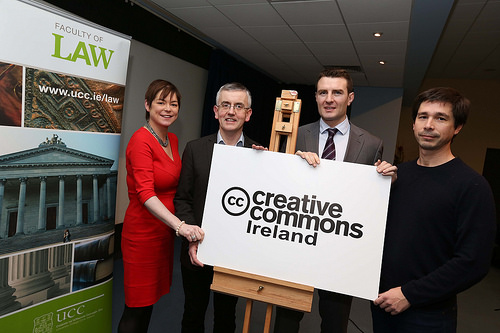Proposed U.S. law would weaken and postpone public access to publicly funded research
mercredi 12 mars 2014 à 17:03This week the US House Representatives introduced H.R. 4186, the Frontiers in Innovation, Research, Science and Technology Act of 2014 (FIRST Act). The stated goal of the proposed law — “to provide for investment in innovation through scientific research and development, [and] to improve the competitiveness of the United States — is worthy and well received. But part of the bill (Section 303) is detrimental to both existing and proposed public access policies in the United States.
Section 303 of the bill would undercut the ability of federal agencies to effectively implement the widely supported White House Directive on Public Access to the Results of Federally Funded Research and undermine the successful public access program pioneered by the National Institutes of Health (NIH) – recently expanded through the FY14 Omnibus Appropriations Act to include the Departments Labor, Education and Health and Human Services. Adoption of Section 303 would be a step backward from existing federal policy in the directive, and put the U.S. at a severe disadvantage among our global competitors.
The White House Directive, NIH Public Access Policy, Omnibus Appropriations Act, and the proposed Fair Access to Science and Technology Research Act (FASTR) all contain similar provisions to ensure public access to publicly funded research after a relatively short embargo (6-12 months). These policies make sure that articles created and published as a result of federal funding are deposited in a repository for access and preservation purposes. In addition, the policies provide for a reasonable process and timeline for agencies to development a plan to comply with the public access requirements.
The FIRST Act would conflict with each of these practices. Instead, if enacted it would permit agencies that must comply with the law to:
- Extend embargoes to federally funded research articles to up to 3 years after initial publication, thus drastically increasing the time before the public has free public access to this research. We’ve said before that the public should be granted immediate access to the content of peer-reviewed scholarly publications resulting from federally funded research. Immediate access is the ideal method to optimize the scientific and commercial utility of the information contained in the articles.
- Fulfill access requirements by providing a link to a publisher’s site. However, this jeopardizes long-term access and preservation of publicly-funded research in the absence of a requirement that those links be permanently preserved. A better outcome would be to ensure that a copy is deposited in a federally-controlled repository.
- Spend up to 18 additional months to develop plans to comply with the conditions of the law, thus further delaying the plans that are already being organized by federal agencies under the White House Directive and Omnibus Appropriations Act.
This bill is scheduled to be marked up in the House Committee on Science, Space, and Technology tomorrow, March 13.
But there are better alternatives, both in existing policy (e.g. White House Directive), and in potential legislation (e.g. FASTR). Here’s what you can do right now:
- Send a letter to members of the House Science, Space and Technology Committee opposing Section 303 of the FIRST Act.
- Use the SPARC action center to customize and send letters directly to your legislators. Tweet your opposition to Section 303 of the FIRST Act, or post about the bill on Facebook.
- Write a letter to the editor or an op-ed for your local or campus newspaper. You can write directly to them or by using the SPARC legislative action center.
- Share this post with your colleagues, labs, friends and family.



